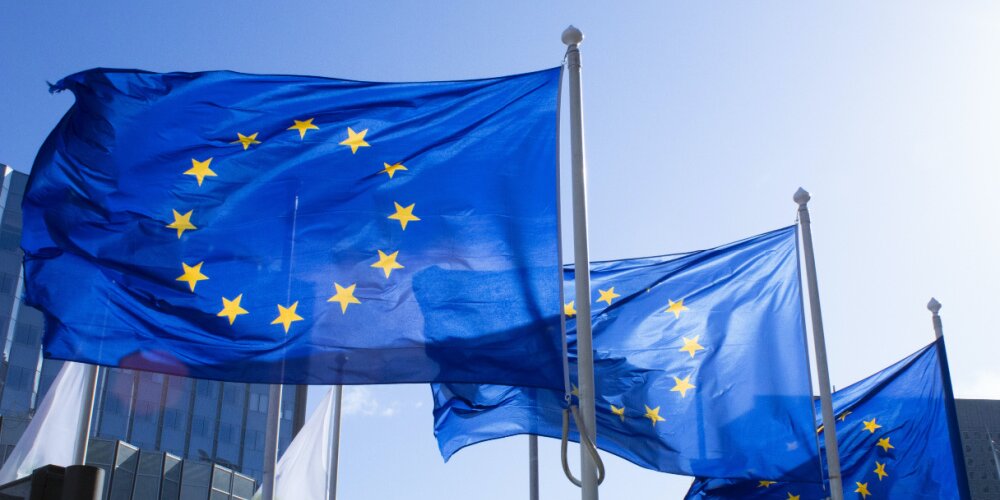Browse our services
Explore how Shearwater Law can help you
Find a maritime expert
Meet our team, find and expert and connect
Talk to our experts
Get in touch, we're here to help

As we enter into 2024, the shipping industry faces one of the most significant regulatory changes in recent decades; the EU Emissions Trading System (EU ETS). But, what exactly is it? And, what are its likely implications? Keep reading to find out…
The EU ETS is a form of ‘cap and trade’ carbon emission trading scheme that was introduced in 2005. Its overarching aim is to lower greenhouse gas emissions across the European Union.
The EU ETS applies to large emitters of carbon dioxide, such as stationary installations (e.g. power plants and industrial facilities) and airlines.
Each applicable ‘emitter’ company is provided with a limit on the amount of greenhouse gases they can emit each year. In effect, their emissions are ‘capped’.
The ‘cap’ of each company is expressed in emission allowances, where one allowance provides the right to emit one tonne of CO₂eq (carbon dioxide equivalent). Each year, every company must surrender enough allowances to account for their CO₂eq emissions.
Therefore, if a company has emitted 1 million tonnes of CO₂eq in a given year, it must surrender one million allowances.
It’s this necessity that drives the ‘market’ in allowances, with companies being able to buy and sell allowances in order to cover their given emissions.
However, the overall cap (e.g. the total number of allowances available each year), declines every year. This is to ensure that emissions decrease over time. It also provides an incentive (and certainty) for companies to reduce the emissions from their operations, as they know there will be fewer allowances available in future years.
Should companies not be able to surrender enough allowances to cover their emissions for a given year, they will have breached the EU ETS regulations and face heavy fines.
And now shipping, one of the most carbon intensive industries in the world, will be falling under the EU ETS.
As of 2024, the EU ETS has been extended to ‘maritime transport emissions’.
This year, the EU ETS will apply to cargo and passenger ships of or above 5,000 gross tonnage (GT).
From 2027, the EU ETS will also apply to offshore ships of or above 5,000 GT.
In order to make the transition easier for ship owners, the EU ETS is ‘ramping up’ the allowance requirement (rather than expecting ship owners to cover 100% of their emissions with allowances straight away).
This ‘ramping up’ of allowances, is as follows:
For ship owners that are covered by the EU ETS as of now, they are required to use (surrender) their first ETS allowances by September 2025 (to cover their reported 2024 emissions).
The EU has clarified that it is the ‘registered owner’ of a ship that is responsible for surrendering ETS allowances.
The EU defines a ‘registered owner’ as, ‘the owner specified on a ship’s certificate of registry. The registered owner is assigned an IMO Unique Company and Registered Owner Identification Number’.
With respect to charterers, the EU stipulates that ‘in respect of a given ship, a bareboat charterer cannot be considered as the shipowner within the meaning of the ETS Directive. This consideration also applies in the case where the ship is subject to ‘parallel registration’ in the registry of two administrations’.
Aside from the costs associated with reducing emissions from their vessels, arguably one of the biggest worries for shipowners will be compliance (and the concomitant risk of breaches).
The EU ETS is set to be enforced by the individual Member States who will ensure that shipping companies under their responsibility surrender sufficient allowances in due time.
Should ship owners not comply with the EU ETS, and fail to surrender allowances, they will be liable to an excess emissions penalty of EUR 100 (corrected for inflation) per tonne of CO₂eq. The ship owner will also remain liable for surrendering the required allowances. The name of the ship owner will also be disclosed to the public.
Should a ship owner fail to surrender allowances for two or more consecutive reporting periods, even harsher penalties may be applied. As the EU explains it:
‘In case a shipping company has failed to comply with surrendering its obligations for two or more consecutive reporting periods, and where other enforcement measures have failed to ensure compliance, the competent authority of the EU Member State of the port of entry may, after giving the opportunity to the company concerned to submit its observations, issue an expulsion order.
In practice, this means that every EU Member State is required to refuse entry to the ships under the responsibility of the shipping company concerned into any of its ports, until the company fulfils its surrendering obligations. Where a ship flies the flag of an EU Member State and enters or is found in one of its ports, the EU Member State will, after giving the opportunity to the concerned company to submit its observations, detain the ship until the company fulfils its obligations’.
With such potential penalties looming, it’s vital that ship owners have access to the very best legal regulatory advice.
Here at Shearwater Law, our regulatory team acts as a single point of truth for our clients. We offer the most up-to-date, comprehensive and commercially-astute advice that will allow your business to remain compliant and avoid the consequences of breached regulations.